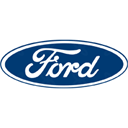What is it?
Everest is the SUV equivalent of the Ford’s best selling Ranger utility.
With seating for up to seven people it’s a lot more family friendly than the ute but offers the same kind of performance.
I didn’t care much for this car the first time around.
At the very least it was way too expensive, especially for its target audience.
But that was then and this is now, because somewhere along the line the penny seems to have dropped because the latest Everest is a surprisingly good offering — more affordable too.
What’s it cost?
Prices start from $49,190 for the entry level, rear-wheel drive Ambient with a 3.2-litre, five-cylinder turbo diesel and 6-speed auto.
Top of the range Titanium is $73,990, but comes with four-wheel drive and a 2.0-litre twin turbo diesel plus a 10-speed auto — that’s right, 10 gears!
Then there’s our test vehicle, the unassuming rear-wheel drive Trend, with the same twin turbo diesel and 10-speed auto, but priced from a very reasonable $56,190 plus on-roads.
Want 4WD? Add $5000 (or $3800 if you’re happy to settle for the 3.2 and the 6-speed auto) — there’s nothing wrong with either.
The entry Ambiente model is amazingly well equipped, but Trend ups the ante with some stuff worth having, like a third row of seats, leather (except said third row), power adjust driver’s seat, LEDs, front sensors, power tailgate, larger 18.0-inch alloys, automatic high beam, auto lights and wipers, and an auto dimming rear view mirror.
The safety story is a strong one too:
- Rear view camera
- Front and rear parking sensors
- Dynamic Stability Control (DSC) with Roll Stability Control
- ABS with Electronic Brakeforce Distribution (EBD) and Traction Control
- Emergency Brake Assist
- Seven airbags including a driver’s knee airbag (curtain covers third row)
- Trailer Sway Control
- Pre-Collision Assist with Pedestrian Detection, Traffic Sign Recognition, Lane Keeping System
- Adaptive cruise control with forward collision alert and heads-up display warning
What’s it go like?
The 2.0-litre engine produces 157kW of power and 500Nm of torque, compared to the older 3.2 which offers 143kW and 470Nm.
It’s not a huge difference and both engines produce their maximum torque between the same 1750 and 2500 revs.
The big difference however is in the amount of fuel they use.
The 2.0 litre consumes a claimed 6.9L/100km, while the 3.2 is good for 8.4.
In reality both are likely to use more than this and to put this in context, we were getting 8.9L/100km after about 350km.
That’s pretty good for a rig this size.
This time around Everest gets push button start unlike the original donor ute.
Starting and driving the SUV for the first time the twin turbo unit feels somewhat strange.
It certainly doesn’t feel or sound like your run of the mill diesel, with a driveline vibe that is difficult to describe — the word “elastic” comes to mind.
And like an elastic band it’s springy and responsive to the throttle, but at the same time you need to punch the pedal.
Changes are smooth and those 10 speeds make sure the engine is always where it needs to be.
The rear suspension is different to that in the ute, more sophisticated to make things more comfortable for rear seat occupants.
It’s also good to see plenty of rear air outlets, located in the roof — to stop the kids from getting sick.
Steering is light and the ride is surprisingly supple and the cabin is a nice and quiet place to be on the road, thanks to noise cancelling technology — same as they use in headphones.
There’s no gear change paddles, but a thumb controlled rocker switch located at the top of the shift lever performs the same function — yuk!
Auto engine stop-start is fitted which cycles down the dual zone aircon with the engine, with rear controls for the air.
It can be stifling on a hot day, but we suspect it can probably be turned off.
The dash is dominated by a large analogue speedo with customisable displays either side — one of which can display the car’s speed digitally.
The large 8.0-inch touchscreen boasts Ford’s SYNC 3 infotainment system, supported by 10-speaker audio, that provides plenty of options including satnav, digital radio, Apple CarPlay and Android Auto, and will respond to voice commands.
The phone hooks up easily too.
What we like?
- The price
- Performance
- Fuel consumption
- Plenty of rear air vents (in the roof)
- Full-size alloy spare
What we don’t like?
- High and difficult to get in and out of
- Aircon cycles down with auto engine stop
The bottom line?
We were pleasantly surprised by this model which has plenty to offer families. Remember the best selling Territory variant was the rear-wheel model too.
CHECKOUT: Ford unveils new Territory – that’s right!
CHECKOUT: Anyone for seconds? asks Ford
Ford Everest Trend, priced from $56,190
-
Looks - 7.5/10
7.5/10
-
Performance - 7.5/10
7.5/10
-
Safety - 8/10
8/10
-
Thirst - 7.5/10
7.5/10
-
Practicality - 7.5/10
7.5/10
-
Comfort - 7/10
7/10
-
Tech - 8/10
8/10
-
Value - 8/10
8/10













